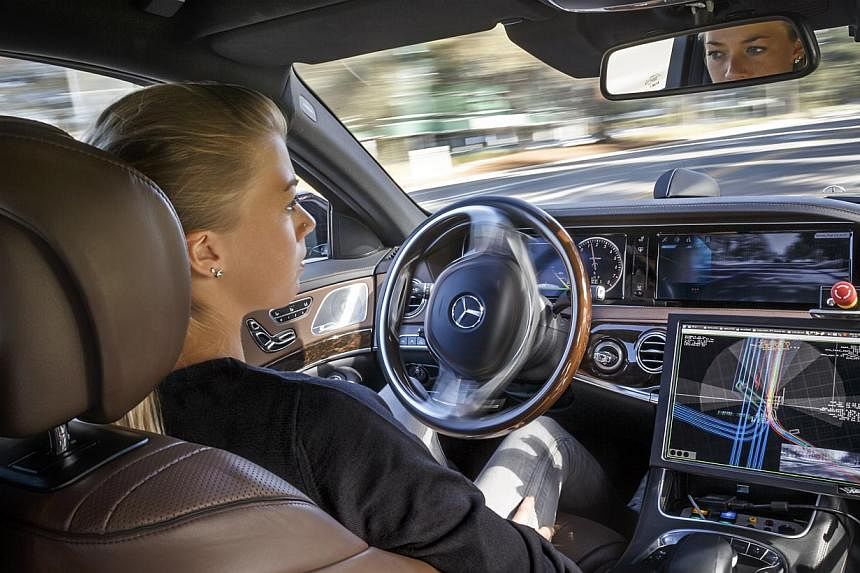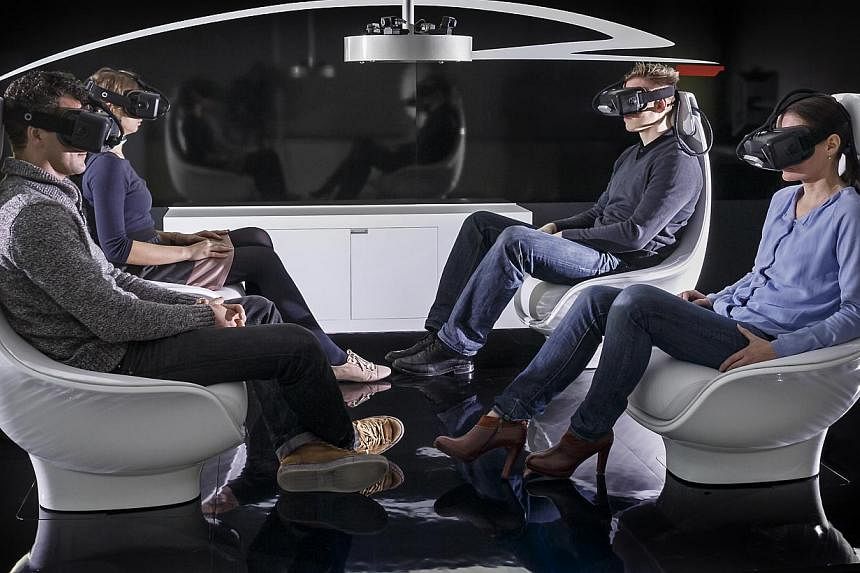Not far from where the first security robots are deployed for street patrol and just around the corner from where Google is plotting its foray into the automotive sector, a black Mercedes-Benz S-class plies silently.
It blends unobtrusively into the upscale neighbourhood save for one thing: No one is holding the steering wheel.
The S500 Intelligent Drive is the first driverless Mercedes permitted to be used on public roads in America. A similar model has been tested on a 100km stretch of autobahn in Germany.
Equipped with a battery of cameras and radars, the autonomous limo gives us a glimpse of what is in store for drivers in the near future. (Hint: They can text at the wheel.)
For me, it was a road test unlike any other. While I am seated in the back row, with two engineers in front, the realisation that no one is controlling the car hits home quite quickly.
Along a narrow suburban street, the S500 is going quite fast for a driverless car. At about 40 to 60kmh, it is able to keep a safe distance from the kerbside vehicles as well as follow lane markings flawlessly.
At junctions, it stops, creeps slowly ahead and goes on when it decides that the coast is clear. Whoever did the programming did a good job because the car stops and starts as smoothly as if a trained chauffeur was at the wheel.
It is able to recognise changes in traffic lights and Life! understands it will never attempt to out-run an amber light.
However, it remains to be seen how it will respond to pedestrians. For instance, if a person is standing near a zebra crossing but shows no sign of wanting to cross, will the Merc still stop? Or will it be intelligent enough to recognise body language, facial expressions and eye movements?
This doubt is raised when the S500 goes up a ramp to join a major road. It does not seem to slow down despite the road curvature. But that is fine because the S-class, with its adaptive air suspension and sturdy chassis, is able to handle such a situation better than lesser vehicles.
The bigger surprise is how it merges into traffic without any hesitation, despite the proximity of an oncoming car. That clearly demonstrates the difference between man and machine.
The latter makes cold calculations based on given parameters. The former might have given way - not because the space to merge is not sufficient but perhaps out of courtesy to the other driver.
But if the world was populated by autonomous cars, road courtesy becomes irrelevant. Then again, autonomous vehicles will never fly into a rage either.
Daimler offered a sneak preview of this world at its Autonomous Mobility TecDay here last week, ahead of a public showcase at the Consumer Electronics Show in Las Vegas in January.
While the S500 Intelligent Drive still has a steering wheel (and a prominent red plunger to stop the car in an emergency), the driverless car of the future dispenses with things associated with the driver.
That means no gear lever, no pedals and no dashboard. A retractable steering wheel is available for rare moments when manual control is necessary.
The cabin of such a vehicle will be a new living space. Its main feature is its variable seating system, with four rotating lounge chairs that allow occupants to face one another.
Through interactive goggles, visitors are able to "see" what being in such a car is like. Occupants can control lighting, temperature and infotainment with a sweep of the hand (like Tom Cruise's character in Minority Report).
This "digital living space" is networked with an intelligent vehicle system. That means the car "talks" to other vehicles on the road, accessing information that will help it to plan routes and avoid incidents.
Occupants can access a 3-D map of the city and merely point to a building or landmark for the car to take them there.
Such a car will find Singapore challenging, though. The cityscape here changes so fast even humans have a hard time keeping up. The constant roadworks and hundreds of road diversions that happen each year can also be problematic for a driverless car.
Just as well we are starting with autonomous golf buggies in the confines of the Chinese and Japanese Gardens in Jurong. With a top speed of 10kmh, they pose minimal risks to flora and fauna.


